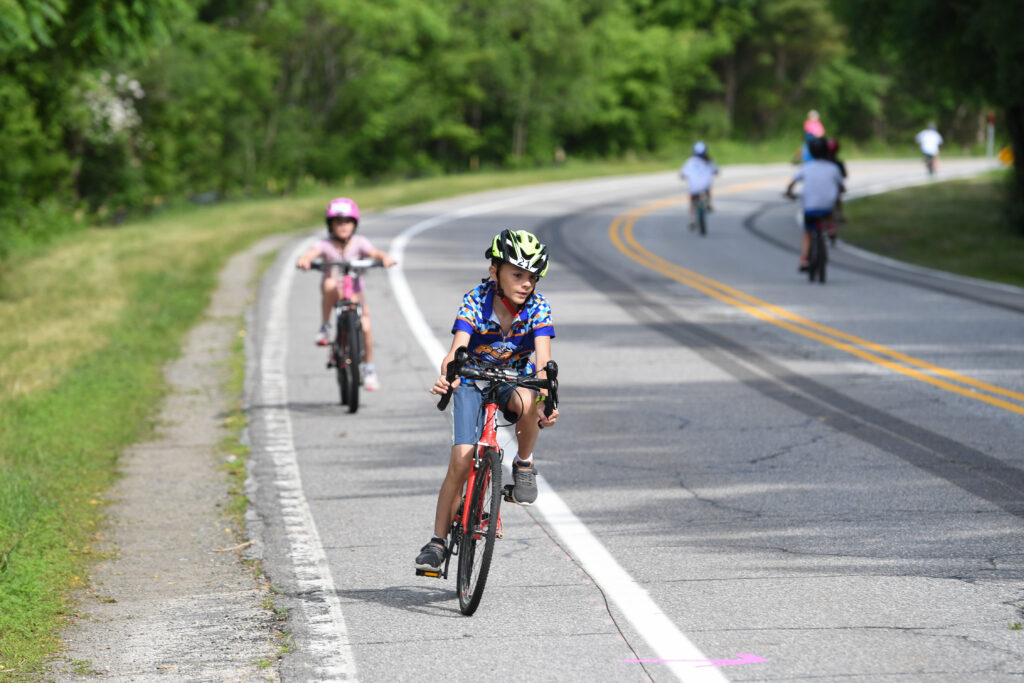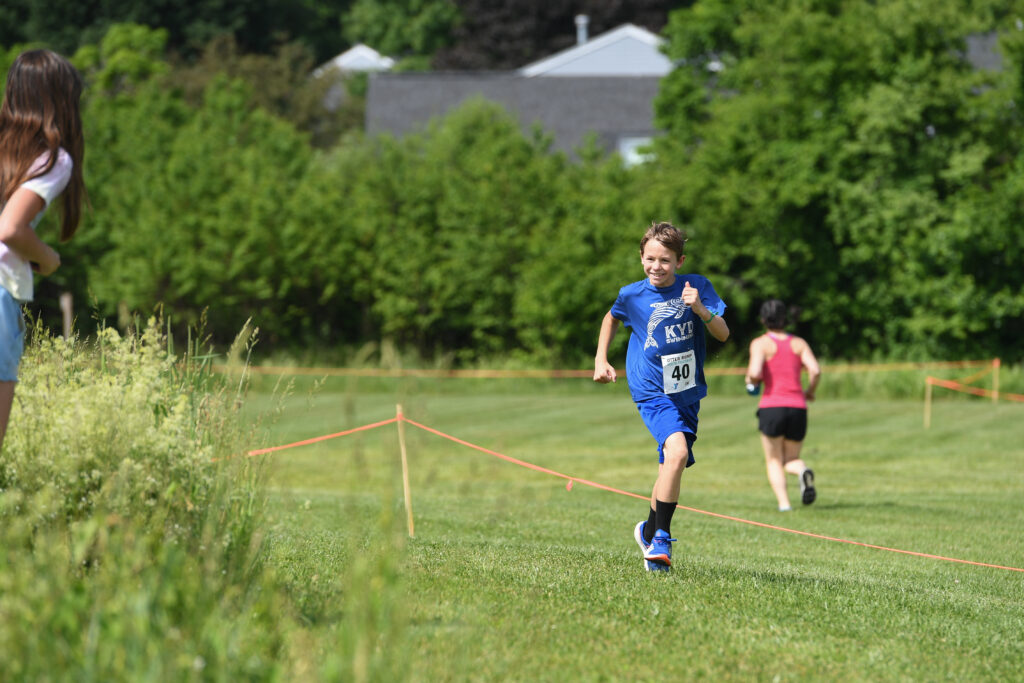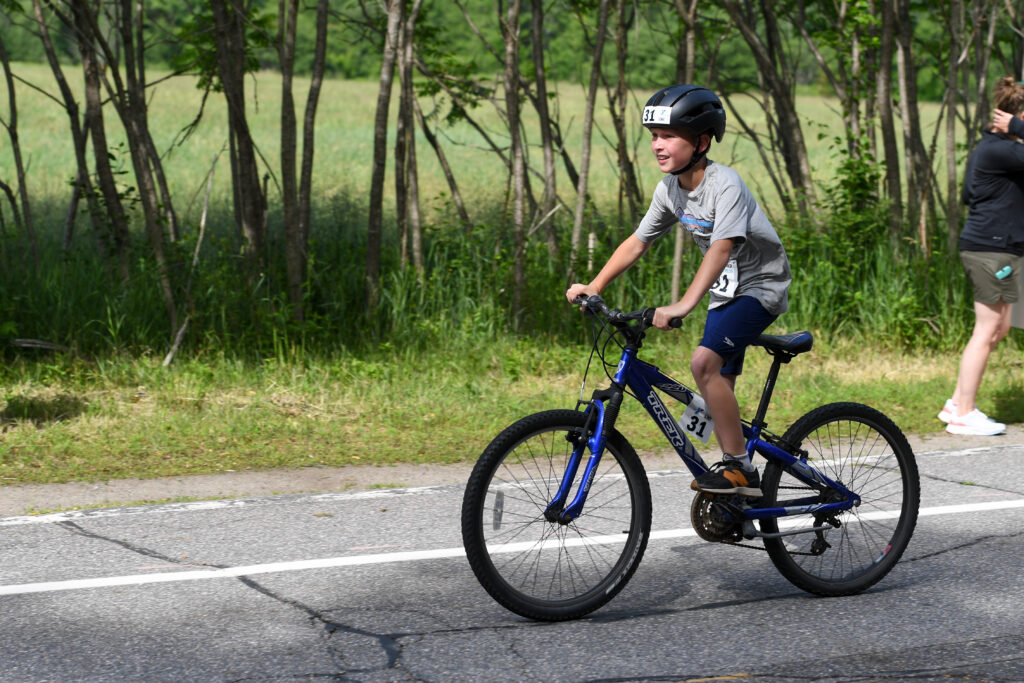One For the Road: Gearing Up for the Last Race We’ll Produce

As I finish this article, we’re just a week and a half from our Otter Romp Youth Triathlon. It is, by our estimate, the only youth triathlon in the state of New Hampshire that abides by USA Triathlon’s distances and rulebooks (even if we are unsanctioned). We’re deep in process of planning for this year’s training program in conjunction with our YMCA. And we’re hopeful that, although we’re now butting up against IRONMAN 70.3 Western Massachusetts weekend, we’ll still see plenty of families with triathletes of all ages head on up to us.
It’s also the last time Kelly and I are going to be race directing anything.
After nearly three decades worth of experience between the two of us, this is it; we’re hanging up the race directing hat for good**. Last spring we wrote about the challenges we were facing as smaller race directors as we said goodbye to one of our events. And both the USA Triathlon and IRONMAN recent race experience surveys paint a pretty similar picture. But stopping altogether wasn’t really in the cards. At least, not until about four weeks ago.
Here are some of the realities as to why we’re deciding that it’s time to give it all up.
We’re Moving
When we moved out of Connecticut to New Hampshire back in 2018, we had thought that that would be the nail in the coffin of us producing running events in Connecticut. And then we managed to put on another 17 events between 2018 and this past fall, just continuing to plug away through brute force and a cult of personality. Oh, and about another 40,000 bonus miles on my truck that we didn’t need…but I digress.
Well, we’re about to move again, and this time we’re moving west. Like, a lot west. Slowtwitch Tundra Division will now be Slowtwitch PacNW Hub, as we’re going to be somewhere around Portland, Oregon as of the middle of next month. And as much as I like producing Otter Romp and the Hogsback Half…I don’t think we’re going to add 6,000 miles roundtrip worth of travel to the proceeding. (It’d also make the profitability of the events even more challenging — more on that in a moment).
Related: anybody want to buy a log cabin on the border of Vermont and New Hampshire? Please?
Costs Continue to Skyrocket, Outpacing What Participants Will Pay

It should come as no surprise that, between the one-two economic punch of inflation and current tariff policy, prices for key goods that are needed for race production are still on a steep upward trajectory. Medals, for instance, are double what they were before — and that’s for those made in the US. Screenprinting, food, water, traffic cones, timers, the whole shebang: it’s all climbing. And it climbs at a rate that participants are not willing, or are not able, to find value at the price point necessary to make an event more profitable.
For a kids race that, for most athletes, will be over in 20 minutes, it’s hard to justify a cost that’s more than $2 per minute of the race. And especially in a rural community, asking for more than $45 for a children’s activity isn’t going to fly. The race winds up being a loss for both us personally, as well as our friends at the YMCA.
And yes — we could cut way back. We could opt to not do shirts, or medals, or have post-race food, or the hair ties that double as lap counters for the run course. But especially with kids — they are there for the medal and the swag. Losing it means we lose the people who would race it, too. It’s a catch-22.
Safety on the Roads

We are incredibly lucky that our race-day course layout offers us a completely closed to traffic road for our athletes to ride upon. It’s a two lane, single access point road. In theory, this should be extremely easy to keep closed. And yet, somehow, last year we had a vehicle decide to go around two barricades and drive on course before being stopped by the police officer assigned to the event. It was lucky; there were no athletes on the bike course at this point, but we had yet to re-open the road to traffic.
That same road is where we do some practice riding with athletes. And car behavior this year, at least in our little slice of the woods, has been far more unpredictable than ever; rolled stop signs to get in front of our bike group, ignored traffic signals, passing too closely to athletes, honked horns…it’s a lot to deal with. And that’s for rides that are less than three miles in total length, on a residential street in a town with fewer than 23,000 people.
It should not come as a surprise that safety while riding is frequently cited by governing bodies as a major factor in participation. It also shouldn’t come as a surprise that one of the more frequently cited solutions is indoor triathlon. Or, alternatively, we see more athletes turning to indoor-exclusive training prior to race-day.
Those solutions, in my opinion, miss the mark. Part of why I got into triathlon was part of the same reason why I loved riding my bike as a kid: being outside. There was the wonder of having brought my own body as far as I had, using nothing but my body and a bike. And yes, the sun on your face, the wind through your helmet, and the endless banter back and forth between friends.
We are going to collectively, as a sport, have to tackle car culture, riding etiquette, and behavior overall in order to ensure triathlon’s future. And I hope we can and do. Working with this training group and putting on this particular event is my favorite race we’ve ever put on. It’s hard to say goodbye. So perhaps, for now, we’ll go with: see you later.
Photos: Ben Kimball Photography
**until we wind up inevitably putting on a race again. You can take us out of New England but I’m sure you can’t take the race director out of us entirely.




Thanks for doing this over all the years.
Triathlon and cycling participation have been declining (expensive sports), while participation in running (low cost) has recently surpassed pre-pandemic levels. I’ve always thought that some types of gear bans could help get participation levels up in triathlon, as well as level out the playing field.
Where is your data that cycling participation is down? usac events are up in my area (san diego).
anyways back to topic - yes the catch 22 is many are doing it for the finisher medal. but the shirt has got to go. the past few years i have put on a free triathlon, (donation based) some how we get medals donated, food, and some prizes from run shops (it helps to have social median fit-influencer connections). We get permits , but not to fully close roads. The competiting long time for profit tri company is now charging near $300 for a spint. You can buy a new bike for that price ! Perhaps its something with how long the event is. Its time to bring back strict cut offs, bigger wave starts, less options (they offer du, aquabike, etc etc - just keep it 1 race, with relay possible))
I’ve mostly looked at Midwest (Michigan, Iowa, Minnesota, Wisconsin, Illinois) and AZ all have less events the last few years than what they did pre covid. Although I don’t believe I’ve actually noticed them up anywhere.
If you’re saying that cycling events are up, it probably is just your perception and not reality. Looking at results on usa cycling, I can tell that the number of races in 2024 in California is well less than what it was in 2019. In fact the number of events have nearly been cut in half
I see some missing in the 2024 search. local series EACC had 3 races in the year, only one shown
Well, were there no non USA sanctioned events in 2019?
There’s quite a big difference pretty much anywhere between events from pre pandemic times and now.
No events sn 2019. San diego suffered then, many had to go to LA to race
We need to get you involved in Move Oregon. https://www.moveoregon.org/